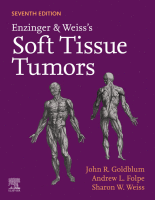Physical Address
304 North Cardinal St.
Dorchester Center, MA 02124

The significance and multiple functions of fat are not always fully appreciated. Fat serves not only as one of the principal and most readily available sources of energy in the body, but also functions as a barrier for the conservation…

The concept of “malignant fibrous histiocytoma” (MFH) has undergone significant change over six decades, and this term has been supplanted or replaced by undifferentiated pleomorphic sarcoma . The term was introduced in 1963 to refer to a group of soft…

Fibrohistiocytic tumors of intermediate malignancy originally included only dermatofibrosarcoma protuberans and the closely related giant cell fibroblastoma. This category now embraces other lesions, such as plexiform fibrohistiocytic tumor and soft tissue giant cell tumor. Angiomatoid fibrous histiocytoma, formerly considered a…

The concept of fibrohistiocytic neoplasms has been challenged largely because the malignant forms (i.e., malignant fibrous histiocytoma) consistently lack histiocytic features, and because some, when carefully studied, show a subtle degree of differentiation. Nonetheless, many benign fibrohistiocytic lesions are truly…

Although previously grouped together in this textbook, superficial and deep fibromatoses are now discussed separately because of distinct differences in clinical behavior. The superficial fibromatoses are described with the benign fibroblastic/myofibroblastic proliferations (see Chapter 7 ). Deep fibromatoses are included…

Fibrous tumors of infancy and childhood can be divided into two large groups: (1) lesions that correspond to similar lesions in adults in terms of clinical setting, microscopic picture, and behavior (e.g., nodular fasciitis, palmar/plantar fibromatosis, abdominal/extraabdominal fibromatosis) and (2)…

Fibrous connective tissue consists principally of fibroblasts and an extracellular matrix (ECM) containing fibrillary structures (collagen, elastin) and nonfibrillary ECM, or ground substance. Dense fibrous connective tissue, such as that found in tendons, aponeuroses, and ligaments, is composed predominantly of…

Immunohistochemistry (IHC) is the use of antibody-based reagents for localization of specific epitopes in tissue sections. Over the past several decades, IHC has become a powerful tool to assist the surgical pathologist in many clinically critical settings. It is important…

Clinical Information The diagnosis of a soft tissue lesion requires a modicum of clinical information and adequate, well-processed tissue. At a minimum, the pathologist should be apprised of patient age, tumor location, and its growth characteristics. In some cases, the…

Acknowledgments An apology is extended to those colleagues whose papers could not be cited because of space considerations. Human neoplasms display a wide variety of genetic alterations, most of which arise after conception, so-called somatic mutations. The types and patterns…